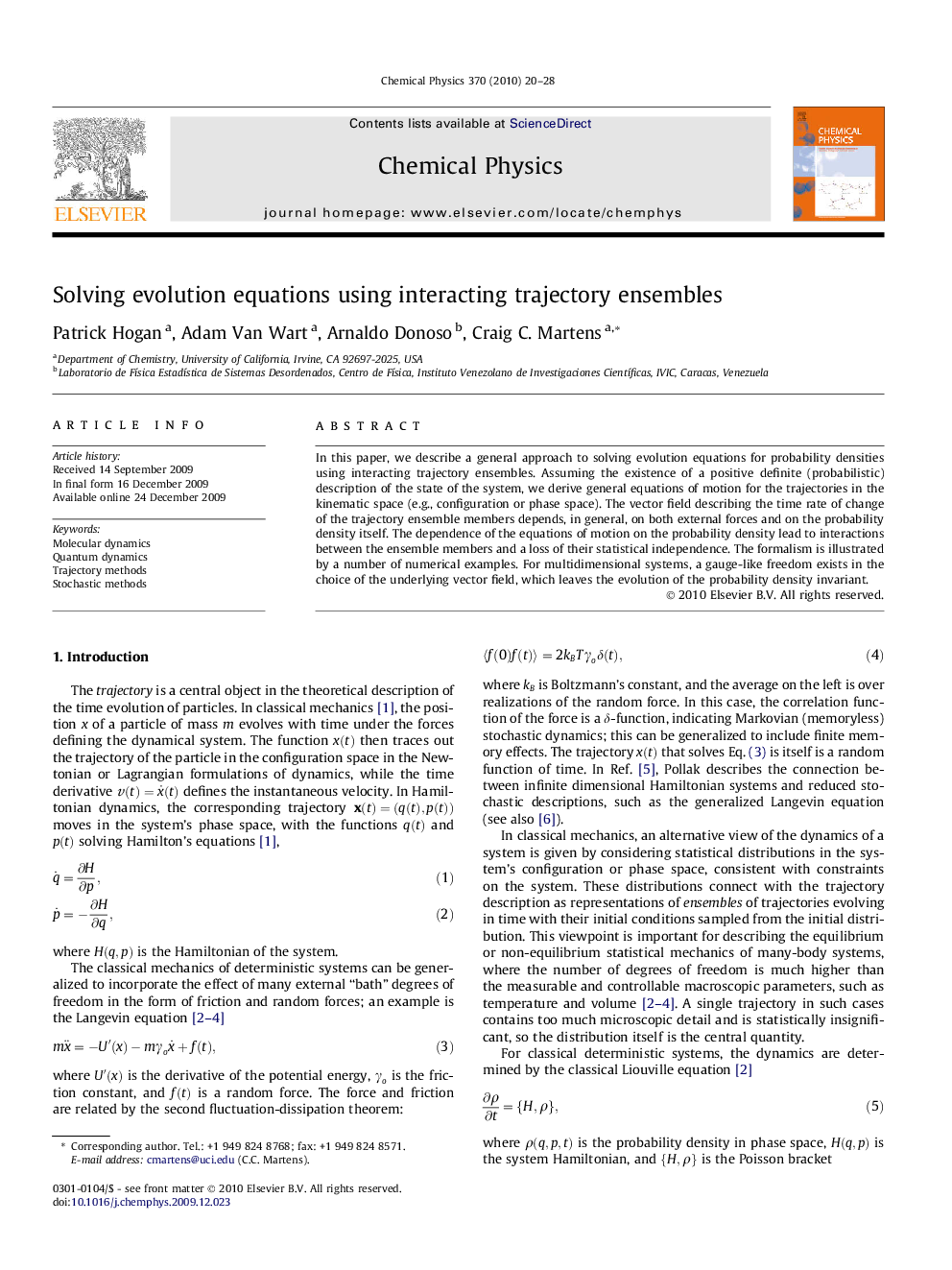| Article ID | Journal | Published Year | Pages | File Type |
|---|---|---|---|---|
| 5375037 | Chemical Physics | 2010 | 9 Pages |
Abstract
In this paper, we describe a general approach to solving evolution equations for probability densities using interacting trajectory ensembles. Assuming the existence of a positive definite (probabilistic) description of the state of the system, we derive general equations of motion for the trajectories in the kinematic space (e.g., configuration or phase space). The vector field describing the time rate of change of the trajectory ensemble members depends, in general, on both external forces and on the probability density itself. The dependence of the equations of motion on the probability density lead to interactions between the ensemble members and a loss of their statistical independence. The formalism is illustrated by a number of numerical examples. For multidimensional systems, a gauge-like freedom exists in the choice of the underlying vector field, which leaves the evolution of the probability density invariant.
Related Topics
Physical Sciences and Engineering
Chemistry
Physical and Theoretical Chemistry
Authors
Patrick Hogan, Adam Van Wart, Arnaldo Donoso, Craig C. Martens,
